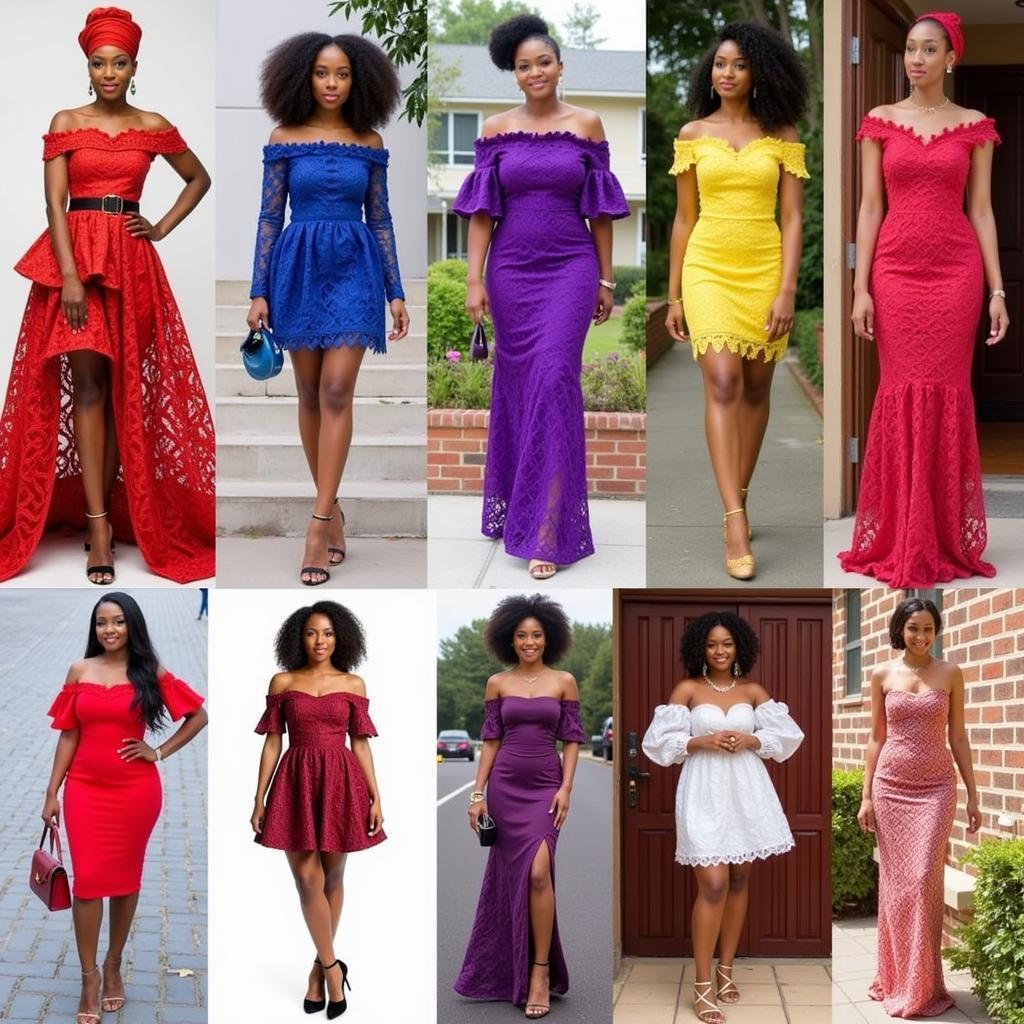African Culture Fashion: A Vibrant Expression of Identity and Heritage
African culture is renowned for its vibrant colors, intricate patterns, and rich history, and these elements are beautifully reflected in its fashion. From the intricate beadwork of the Maasai to the bold prints of Ankara fabrics, African fashion is a captivating blend of tradition and modernity. It’s more than just clothing; it’s a powerful expression of identity, heritage, and cultural pride.
The Diverse Landscape of African Fashion
The continent’s diverse cultures and geographic landscapes have given rise to a wide array of unique fashion styles. Each region has its own distinct traditions, materials, and techniques, resulting in a truly breathtaking spectrum of garments.
Traditional Attire
Traditional African clothing is a significant part of cultural heritage, often reflecting the history, beliefs, and social status of its wearers.
- Kente Cloth: Originating from Ghana, Kente cloth is a handwoven fabric known for its vibrant colors and geometric patterns. Each pattern tells a story, representing different clans, social groups, and historical events.
- Buba: A long, loose-fitting robe, the Buba is a staple in West African fashion. It can be worn by both men and women and is often adorned with elaborate embroidery or beadwork.
- Dashiki: This colorful, vibrant shirt with a distinctive V-shaped neckline is a symbol of African pride and is often worn by men. It can be made from a variety of fabrics, including cotton, silk, and brocade.
- Boubou: A long, flowing robe often worn by men in West Africa, the Boubou is a symbol of status and elegance. It can be made from different fabrics like silk, cotton, or brocade and often features intricate embroidery or embellishments.
- Ankara: Popular across the continent, Ankara fabrics are known for their vibrant prints and versatile use. They are used to create a wide range of clothing, from dresses to shirts to trousers.
“African fashion is a powerful tool for self-expression and cultural preservation. It’s a way for people to connect with their heritage and celebrate their unique identities,” says Kendi Njeri, a renowned fashion designer from Kenya.
Contemporary African Fashion
Modern African fashion is a captivating blend of traditional techniques and contemporary trends. Designers are increasingly experimenting with new fabrics, silhouettes, and styles, creating bold, innovative designs that are gaining international recognition.
- Modern reinterpretations: Many contemporary designers are reinterpreting traditional styles and incorporating them into modern designs. This creates a unique fusion of heritage and innovation.
- Global influence: African fashion is increasingly making its mark on the global stage, with international designers incorporating African influences into their collections. This trend showcases the continent’s unique aesthetic and creativity.
- Social impact: African fashion is also playing a vital role in promoting social change and empowering women. Many designers are using their platforms to address social issues and create opportunities for artisans and communities.
“African fashion is a force to be reckoned with. It’s a movement that is challenging stereotypes, celebrating diversity, and showcasing the beauty of the continent,” shares Chuma Nwagbara, a Nigerian fashion influencer.
The Impact of African Culture Fashion
African Culture Fashion has a significant impact on the global fashion scene. It is influencing trends, inspiring designers, and pushing boundaries.
- Trendsetting styles: Ankara fabrics and traditional patterns are increasingly popular worldwide, appearing in high-fashion collections and street style.
- Cultural exchange: African fashion is fostering cultural exchange and appreciation for the continent’s rich heritage.
- Economic development: The growing demand for African fashion is creating opportunities for designers, artisans, and businesses across the continent.
“African fashion is a powerful economic driver, creating jobs, generating revenue, and empowering communities,” says Amina Mama, a renowned fashion historian.
Frequently Asked Questions (FAQ)
1. What are the key elements of African fashion?
African fashion is characterized by vibrant colors, intricate patterns, and unique textiles. Each region has its own distinct styles and traditions.
2. How has African fashion evolved over time?
African fashion has evolved from traditional styles to contemporary designs, reflecting the continent’s changing social and economic landscapes.
3. What are some of the challenges facing African fashion?
Challenges include limited access to resources, lack of infrastructure, and the need for greater global recognition and support.
4. How can I support African fashion?
You can support African fashion by purchasing from African designers, attending fashion events, and spreading awareness about the beauty and diversity of African culture.
5. What are some must-visit destinations for African fashion?
Must-visit destinations include Dakar, Lagos, Johannesburg, and Nairobi. These cities are known for their vibrant fashion scenes, talented designers, and unique styles.
African culture fashion is a powerful expression of identity and heritage. It is a vibrant and evolving force that continues to captivate and inspire the world. From traditional attires to contemporary designs, African fashion showcases the beauty and diversity of the continent. It is a cultural treasure that deserves to be celebrated and embraced.

